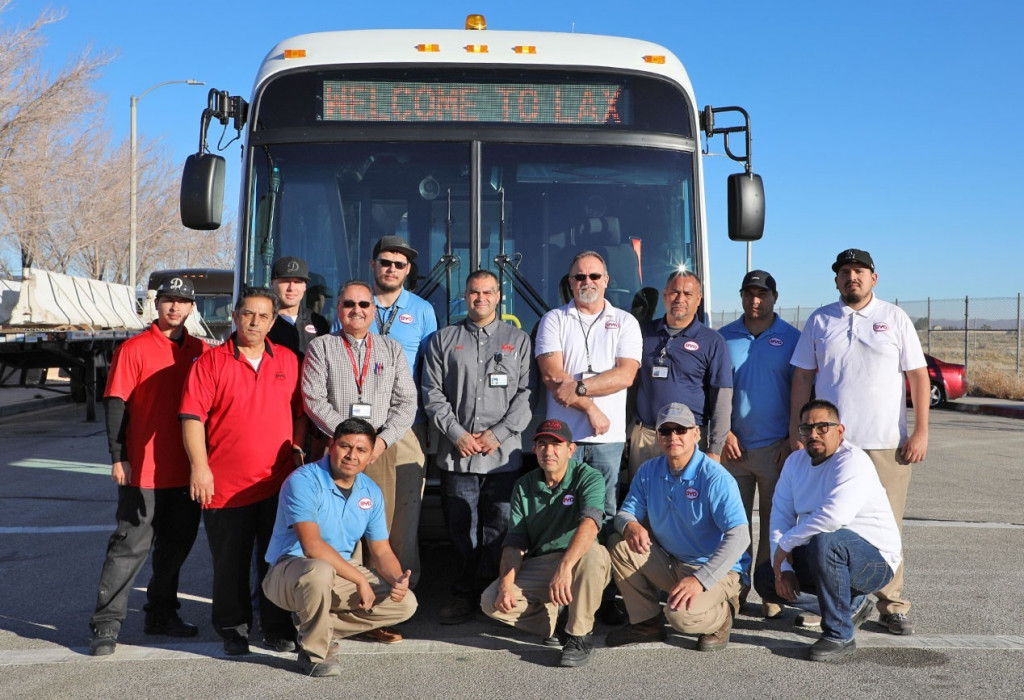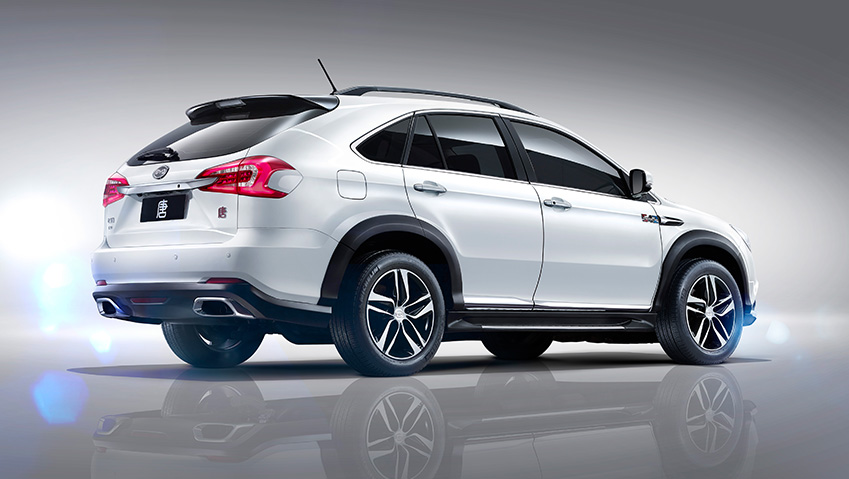As a number of larger truck and bus players have been cautiously treading into the electric sector, an electric-vehicle heavyweight that’s relatively unknown in the U.S. has made a big difference in the number of electric trucks and buses here.
China’s BYD earlier this month announced its 100th battery-electric truck in the U.S.—a Class 8 electric semi, the 8TT, that will be used by Anheuser-Busch to deliver beverages from an Oakland facility out to Bay Area grocery and convenience stores.

BYD's 100th U.S.-assembled electric heavy-duty truck - for Anheuser-Busch
In December BYD passed its 400th electric bus delivery, with the fulfillment of a 20-bus order to the Los Angeles World Airports; they’ll be used for travel between terminals and gates at LAX.
There are about 650 electric transit buses in service in the U.S., with nearly 400 of those from BYD—and all of those from a BYD facility in Lancaster, California.
The company assembles commercial trucks in Lancaster from a kit; but it goes deeper with buses, making the distinction that it manufactures them at the facility to very specific needs. For BYD’s buses, everything is put together at the California plant, including the drivetrain and battery pack and even the welding of the body.
“Every transit district has distinct parameters,” said spokesman Frank Girardot.
The company currently offers 30-, 35-, and 40-foot transit buses, plus a 60-foot articulated version that seats up to 55. Their ranges are cited as up to 170 miles in standard form or up to 220 miles in high-capacity (446-kwh) versions, and the buses can charge at up to 200 kw.

BYD's 400th U.S.-built electric bus
Fully electric buses have been assembled in Lancaster since 2013, and it currently has about 1,000 employees there including 750 union workers. Since 2014, the BYD U.S.-made buses have been delivered to customers in 14 states and four Canadian provinces, with the “vast majority” in service in the U.S.; it opened another e-bus factory in Canada last summer.
BYD continues to differ from other vehicle maker in its choice of battery technology. It has opted to use an iron-phosphate chemistry that it claims is safer as well as better with the constant power demands of larger trucks.
Experience from various transit agencies has shown that BYD’s batteries, like others, aren’t immune to sluggish performance in cold weather, though. According to an analysis released last month by the Center for Transportation and the Environment (CTE), battery electric buses lost nearly 38 percent of their range in going from 50-60 degrees F down to 22-32 degrees F.
Each of BYD’s buses eliminates 1,690 tons of CO2, 10 tons of nitrogen oxides, and 350 pounds of diesel particulate matter over 12 years.
BYD was the top global electric-car producer for many years, and it hasn’t given up on the possibility of passenger cars for North America either, but it’s definitely a long-game strategy.
In December, the company delivered its first batch of 25 BYD e6 electric cars for taxi service in Montreal. It’s part of a plan to deliver a total of 2,000 of the EVs over the next two years, for taxi duty in Quebec. A parallel project with Uber in the U.S. appears to be dead, however.

2016 BYD Tang plug-in hybrid SUV, made in China
Last year BYD showed its performance-oriented Tang plug-in hybrid at Pebble Beach. And in the past several years BYD has hired several top designers—Audi’s Wolfgang Egger, to be BYD’s design director; JuanMa López, formerly of Lamborghini and Ferrari and BYD’s new lead for exteriors; and Michele Jauch-Paganetti, formerly of Mercedes-Benz, for interiors.
Spokesman Girardot mentioned to Green Car Reports that BYD is in the midst of a transition beyond fleets, into the personal-automobile market and “a more design-oriented vehicle that’s fun.” It’s also joined forces with Toyota for EV development in China.
